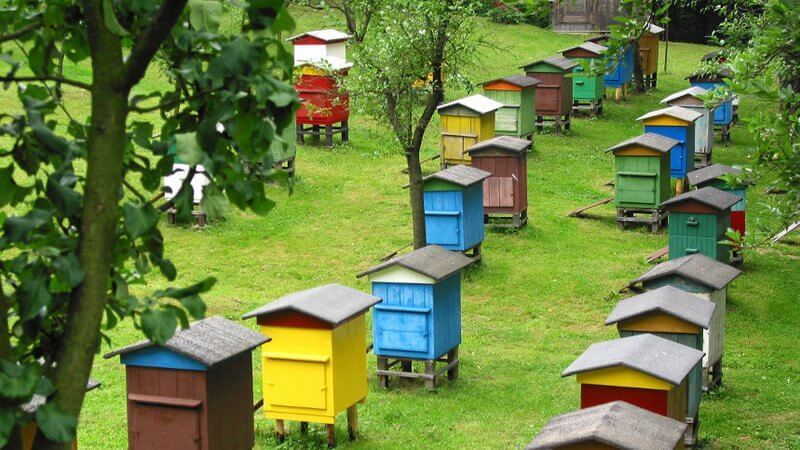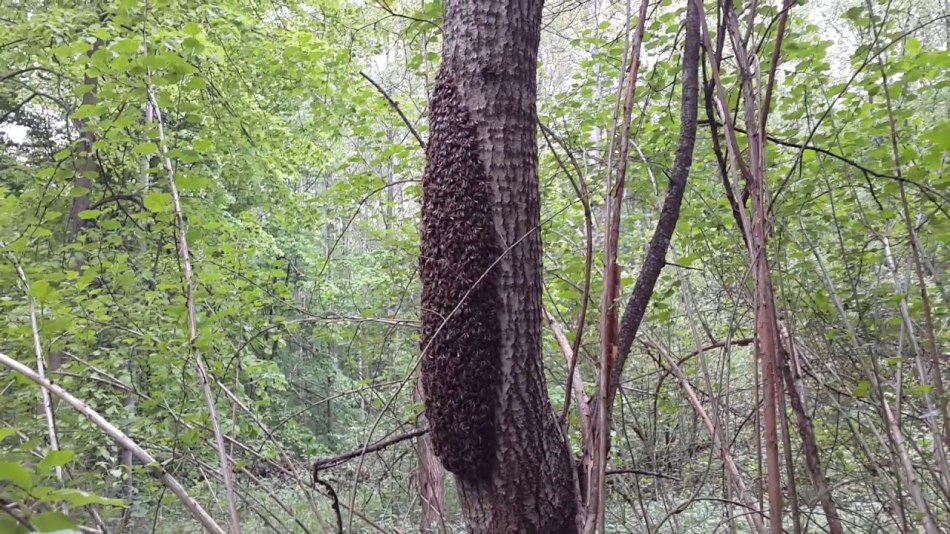Brief information for children about bee biology. Interesting facts and features of the life of a bee.
Content
A bee is an animal or insect: how to prove?
All living things, including bees, have a biological classification. Knowing the scientific classification of the bee, will you always give the correct answer to the question: a bee is an animal or an insect?
Scientific classification of bees:
- The bee belongs to the kingdom of animals;
- Type - arthropod;
- Class - insects.
Important: a bee is an insect. There is a science for the study of bees - apiology.
To prove that a bee is an insect, it is enough to pay attention to the signs of insects that were highlighted by lendomologists:
- Insects have three departments: head, chest and abdomen.
- Insects have antennae, as well as faceting eyes.
- There are several pairs of legs and wings on the insect body.
But it is worth knowing that some insects have no wings. They lost them in the process of evolution as unnecessary. For example, ants.
Facet eye is a complex organ of vision. To understand how such an eye is arranged, you can imagine the head of the sunflower with seeds. In the facial eye there are many separate components - faces.

Bees are highly organized insects. They are capable of themselves, without the help of a person to get food, drink and organize housing. Bees occurred from the OS. It is known that the wasps are insectivorous. Bees, in turn, eat only honey, nectar, and pollen of plants. There is a hypothesis that some wasps were reborn into bees when they ate insects in pollen. They liked the taste of pollen more, so the wasps evolved in bees.
Bees have more than 20 thousand subspecies. They live on the whole globe, except for Antarctica. Bees live in large families, but sometimes single bees are found. Single bees have only one type of females that produce and feed offspring. Single bees do not have numerous number of working bees that could provide large stocks of honey.
Bees are very hardworking insects. There are no individuals in the bee family that could spend the day idle, except drones. The trunks-panche does not allow drones to stay in the hive for the winter. Each bee is busy with its own thing: some feed the larvae, others fly behind the nectar, and others make honey, fourth - clean the hive. We have already talked about the hierarchy of the bee family in this article.
Bees bring great benefits not only to humanity, giving their sweet and useful products. Bees make a great contribution to the natural process of pollination. Plants and other insects pollinate, but bees do it more and better than anyone else. One bee can pollinate 3 million flowers in a day.

Important: over the past decade, an unidentified nature has been observed throughout the world, which is characterized by extinction of bee colonies.
This phenomenon is very worried about both beekeepers and scientists. Scientists suggest that if bee families will die out at such a fast pace, then in the next 50 years humanity risks being left without bees. In other words, all bees can die. There are assumptions that bees are dying out for such reasons:
- The use of pesticides in agriculture for the processing of plant products;
- The rapid growth of cities, as a result of which the number of wild honey plants is reduced.
From the very first days of his birth and until the end of his life, the bee works diligently. Unfortunately, the life span is short -lived. On average, a bee can live up to 28 days. Long liver bees live up to 100 days.
Video: Biology of honey bee
Honey bee: homemade or wild animal, insect?
Important: bees are homemade and wild.
Bee bees are not considered homemade because they can be brought as a home cat or dog. The homes are also attributed to animals that a person breeds for profit or benefits. By the way, in this case it is appropriate to say that bees are pets. Such a wording is a generally accepted cliche.
But the bees were originally wild. They lived in the hollows of trees and made honey only for the purpose of their own food. People have domesticated a large number of animals that are capable of producing food or assisting in the household, including bees.
To do this, they began to put traps, the bees settled in them. Then people carried traps with wild bees to their territory. The bees got used to their "house" and did not fly away anywhere. Currently, beekeepers in the same way catch swarms of wild and stray bees.

But it is worth saying that bees have a biological peculiarity - growth. This means that bees fly away from the hive, even if they have been living there for a long time. Such an event happens in the spring, and an experienced beekeeper knows how to warn bees. But if it happened that the bees still flew out of the hive, it is worth making attempts to return them back. For this, traps are placed again.
When the bees fly out of the hive, they do not scatter in a chaotic manner in search of a new place of residence. The whole family sits on a bush or wood, and only a few reconnaissance bees fly in search of a good place. When the scouts find such a place, they return to the family. Then the entire bee family moves to a new place of residence.

Wild bees still exist in nature. They get nectar from wild honey plants. Basically, wild bees live in forests, where a person has not yet reached. Home bees that escaped from the hive can become wild if they are not caught by a beekeeper. They will organize a nest and a place for the production of offspring.
In winter, bees do not hibernate. Low temperatures do not allow them to fly, nectar cannot be found in the cold season, so the bees are going to the club and thus winter. They always care about the future, make good stocks of honey for the winter. A dense and warm club helps to warm up and keep living offspring.
Initially, there were no hives in their modern sense. The extraction of honey caused inconvenience to the beekeeper and bees. Scientific and technological progress did not bypass this important industry. There are various designs of hives and other devices that do not cause inconvenience bees.

Even those bees that live in the apiary are able to sting. Many bites go to the beekeeper, despite the fact that he is the owner of the bees. This is the peculiarity of these insects. Thus, they are protected from a potential threat. Although the bees themselves are peaceful creatures. If you do not touch their home, they will not attack people. It is a pity that self -defense costs a bee with the purpose of his own life. After a bite, the bee has no chance of survival. Find out why the bee dies after a bite, you can here.
Bees have unique abilities and interesting features. You can find out more interesting facts about bees in the video.







